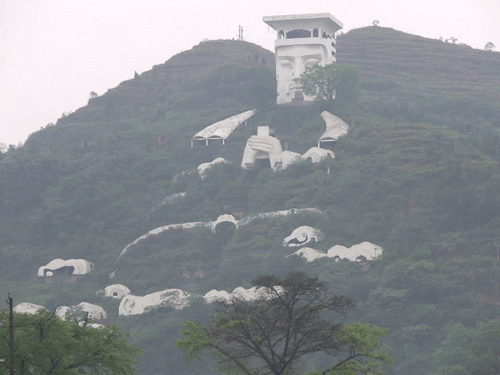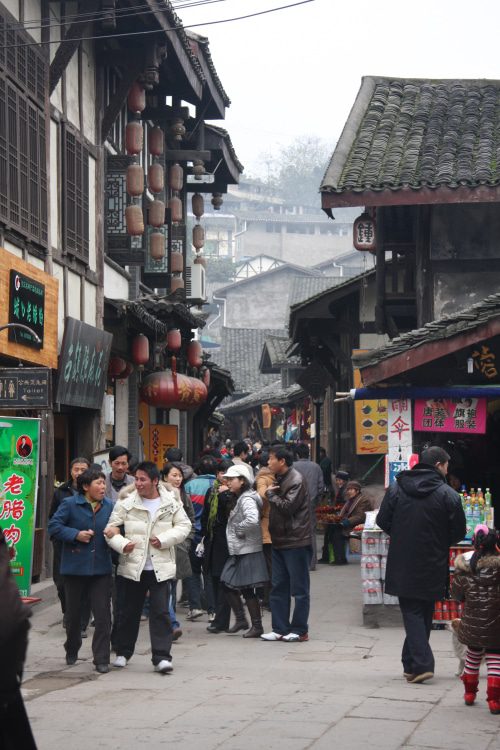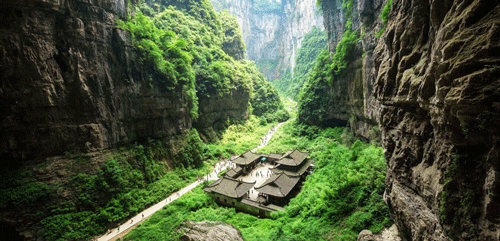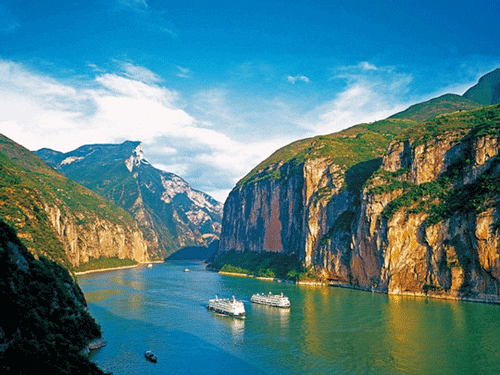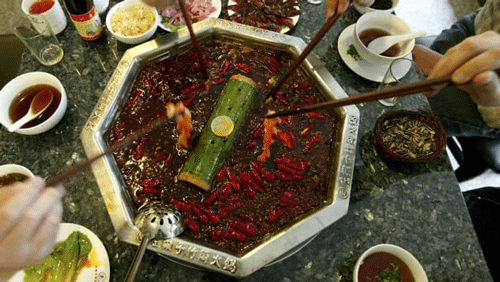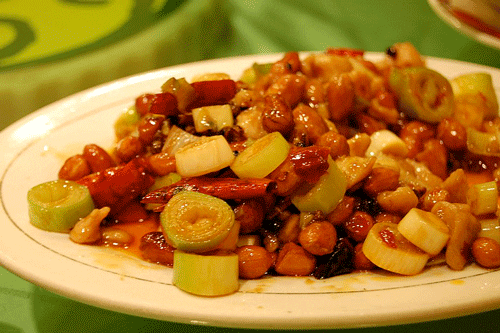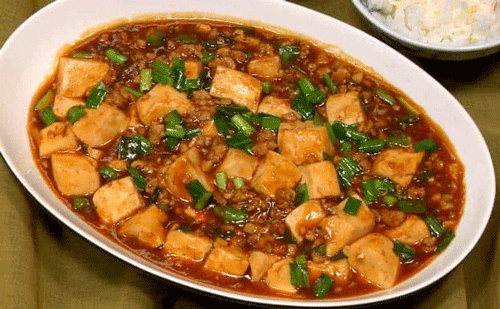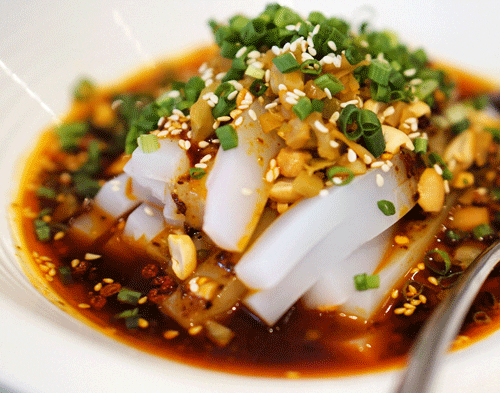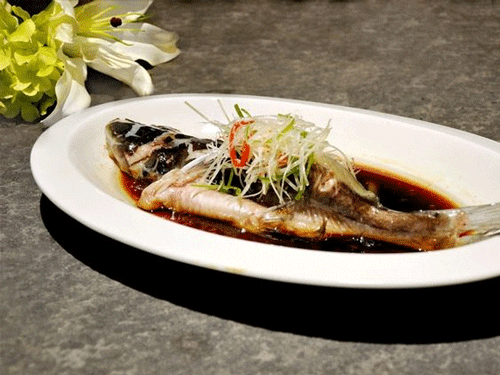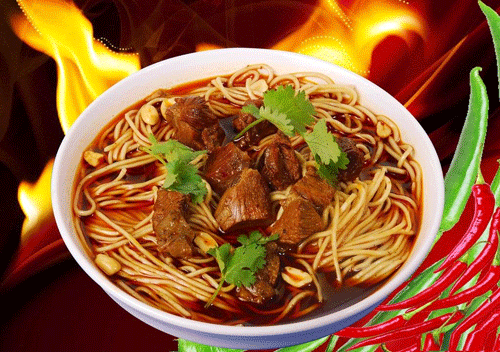Chongqing is one of four national central cities in China besides Bejing, Shanghai, and Tianjin. Used to be a part of Sichuan province, Chongqing was separated to be a municipality in 1997. Known as the ‘Mountain City’, Chongqing is attractive for stunning natural landscapes and rich cultural heritage. This city is the home to various picturesque karst caves, amazing gorges, famous hot springs, and rustic ancient towns.
Located in the southwest of China, Chongqing possesses a modern and state-of-the-art transportation system. If you want to go farther to Western China, Chongqing is a perfect starting point.
Best Time to Travel to Chongqing
Located in subtropical monsoon climate, Chongqing’s weather is characterized by a high level of humidity. Chongqing, together with Nanjing and Wuhan are considered as three ‘furnace cities’ of China. Summer is really hot here with the average temperature of 30 degrees Celsius. The weather is extremely blistering in July when it can reach 44 degrees Celsius. It also rains heavily this month, so consider a Yangtze River cruise in summer and avoid sightseeing activities at noon.
Chongqing is often covered by fog during winter and spring. It is called ‘The City of Fog’ since there are more than 60 foggy days in Chongqing every year. Therefore, the best times to travel to Chongqing are spring (March – early May) and autumn (September – early November).
Chongqing Travel Tips
- It is easy to get around the city using the Chongqing motorail and bus lines. You can take the motorail to commute from the airport to the city center. It is not safe to ride a bicycle in this city since it is normally covered by fog, so we advise you to take public transports.
- If you travel during summer, bring light clothing and sun protection items (sunglasses, sunscreen, hat, etc).
- Sichuan food is signature for its spicy and oily. If you do not like spicy food, ask for the ones without any chili. Drink a lot of water and eat fruits if you do not want to get any acne and pimple after Chongqing trip.
What to See in Chongqing
1. Yangtze River and the Three Gorges

- Yangtze River
Yangtze River is famous for being the longest river in China. It flows from the west of Tibet to Shanghai and runs along many captivating attractions in this country, including the spectacular Three Gorges – Qutang, Wu, and Xiling. Qutang Gorge is the shortest yet loftiest among the three while Wu Gorge is the most romantic one which is usually covered by mist. Xiling is the last gorge and also the longest one.
The section between Chongqing and Yichang is well-known for a Yangtze River cruise. You will see many towering cliffs, stunning mountains and lovely villages along the river’s banks. We recommend that you take a Yangtze River cruise in spring or autumn, especially in April, May, September, and October. Chongqing will experience a high level of rainfall in summer, so schedule your time!
2. Fengdu Ghost City

- Fengdu Ghost City
If you want to understand the Chinese’ perception of the Hell and afterlife, Fengdu Ghost City is our place. Their perception is slightly similar to the Western ideas. According to the traditional legends, Fengdu is where you have to come if you do evil things when you are alive. Good people go to the heaven, evil people go to Fengdu. You can see many statues and temples here which represent the demons. This place is a great stretch for you during a Yangtze River cruise.
3. Three Gorges Museum
With an area of 40000 square meters, Three Gorges Museum displays cultural and historical relics of Chongqing and Three Gorges area. This museum is divided into four parts: ‘Glorious Three Gorges’ contains historical artifacts of this attraction; ‘The Ancient Ba Yu’ shows us the prehistoric life in Chongqing; ‘The Development of Chongqing’ is the showcase of changes in this city in the 20th century and ‘The Anti-Japanese Days’ displays wartime history. You will have a chance to see many valuable paintings, calligraphies, porcelain, sculptures and ancient money of imperial dynasties. It is open from 9 am to 5 pm every day, except Monday.
4. Dazu Grottoes
Dazu Grottoes or Dazu Rock Carving is located in Dazu County, 167 kilometers away from the center of Chongqing. Dazu Rock Carving is a masterpiece of Chinese grotto art. Containing 60,000 statues, this attraction represents splendid carving techniques and craftsmanship of skillful Chinese workers and is the harmonious combination of mechanics and optics. This masterpiece was started during Tang dynasty and continued to Ming and Qing dynasties. You can see Chinese inscriptions as well as Buddhist statues and Taoist and Confucian stone figures here.
5. Ci Qi Kou Old Town (Porcelain Town)

- Ci Qi Kou Old Town
14 kilometers from the center of Chongqing, Ci Qi Kou was used to be a manufacturing and trading spot during Ming and Qing dynasties. Nowadays, it is promoted to be a tourist spot where travelers go shopping, buy souvenirs and street snacks. This town is considered ‘Little Chongqing’ because of its bustling and dynamic features. You can discover about Chinese culture in this small town, from distinctive architecture to traditional teahouse and craft shops. You can see a 1500-year-old Buddhist temple at the center of this town. Moreover, you can find many restaurants and eateries here where you can sample spicy Sichuan cuisines.
6. Wulong Karst National Geology Park

- Wulong Karst National Geology Park
As a UNESCO Heritage site, Wulong Karst is a famous spot for sightseeing and trekking activities. Limestone karsts, caves, natural bridges and underground streams are must-see attractions. Due to its spectacular beauty, Wulong Karst is the film studio for Transformer 4. When visiting Wulong Karst National Geology Park, you should see Three Natural Bridges, Furong Cave and Houping Giant Doline. Three Natural Bridges are the popular place for adventure and ecotourism tours due to its rare geological features.
7. Great Hall of the People (Chongqing People’s Hall)
Built between 1951 and 1954, Chongqing People’s Hall is the iconic symbol of this city. It is near Three Gorges Museum and you cannot miss this place in your Chongqing trip. This hall is inspired by Ming and Qing dynasties’ style and it is the combination of Soviet and Chinese architecture. You can see local people gathering here to see light shows in the evening.
What to Do in Chongqing
Cruising to Yangtze River

- Yangtze River Cruise
Yangtze River is famous for being the longest river in China. It flows from the west of Tibet to Shanghai and runs along many captivating attractions in this country, including the spectacular Three Gorges – Qutang, Wu, and Xiling. The section between Chongqing and Yichang is well-known for a Yangtze River cruise. You will see many towering cliffs, stunning mountains and lovely villages along the river’s banks.
Sightseeing to famous spots
As one of the largest cities in China, it is obvious that Chongqing is the home to various attractions:
- Dazu Grottoes: Containing 60,000 statues, this attraction represents splendid carving techniques and craftsmanship of skillful Chinese workers and is the harmonious combination of mechanics and optics.
- Wulong Karst Region: As a UNESCO Heritage site, Wulong Karst is a famous spot for sightseeing and trekking activities. Limestone karsts, caves, natural bridges and underground streams are must-see attractions.
- Ci Qi Kou Old Town: 14 kilometers from the center of Chongqing, Ci Qi Kou was used to be a manufacturing and trading spot during Ming and Qing dynasties. Nowadays, it is promoted to be a tourist spot where travelers go shopping, buy souvenirs and street snacks.
- Fengdu Ghost City: If you want to understand the Chinese’ perception of the Hell and afterlife, Fengdu Ghost City is our place.
- Three Gorges Museum: With an area of 40000 square meters, Three Gorges Museum displays cultural and historical relics of Chongqing and Three Gorges area.
Soaking in a hot spring
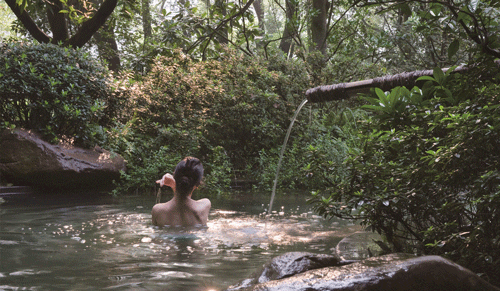
Chongqing is famous for its hot spring spas. There are more than 10 hot springs around this city. Decorated in Chinese traditional architecture with natural landscapes nearby, these spas are the place for you to relax and soak in hot springs. Furthermore, you can choose other services such as aromatherapy and massage with Chinese herbs and medicine. Remember to consider your health situation before soaking in a hot spring and make sure that you don’t soak within one hour before and after a meal.
- Ronghui Hot Spring: Located near Radisson Hotel, the spa staff in Ronghui Hot Spring will satisfy you with professional manners and luxurious services.
- Northern Hot Springs Park: 50 kilometers from the city center, the hot springs here are really beneficial for your health.
- Southern Hot Springs Park: This Park has 3 swimming pools and more than 100 bathrooms.
What to Eat in Chongqing
Located near Sichuan province, it is apparent that the cuisines here are influenced by one of the ‘Eight Cuisine Regions’ in China and they are slightly similar to Chengdu’s foods. Hot, spicy and numbing – you will never forget their special taste.
1. Hot Pot

- Sichuan Hotpot
Sichuan Hot Pot is a must-try food when traveling to Chongqing. This food is famous for its numbingly spicy broth which contains a lot of Sichuanese peppercorns and other Chinese herbs and spices. These ingredients make the broth strikingly red. Raw ingredients such as raw beef, pork, chicken, ducks, kidney, vegetables, tofu, and mushrooms will be cooked by you in the hotpot.
If you are afraid of spicy foods, there is clear broth as well. In some restaurants, the pots are divided into two parts so that you can try both spicy and non-spicy broth at the same time. If you want to challenge yourself a little bit, go for this option.
2. Kung Pao Chicken (spicy diced chicken)

- Kung Pao Chicken
Kung Pao Chicken is a tourist-friendly food which can also be found in European and American restaurants. It features spicy stir-fried cubed chicken mixed with peanuts, vegetables and chili pepper. This food is colorful with brown sweet-and-sour sauce, golden peanuts and green onion. Peppercorns will be added to enhance the spicy flavor of this dish. Though this dish can be found in many Chinese provinces, it is usually less spicy than its original serving. Westerners are in love with kung pao chicken since it is sweet and yummy.
3. Mapo Tofu

- Ma Po Tofu
This is the favorite food when it comes to Sichuan cuisine. Mapo Tofu means ‘Pockmarked grandma’s tofu’ in English. Mapo Tofu is said to be invented by a pockmarked woman in the 19th century. This dish is made from inexpensive and easy-to-find ingredients: tofu cubes, ground beef or pork and spicy chili-and-bean sauce. You can choose to add chestnuts, onions or other vegetables for this food. Ma Po Tofu is tasty with milky tofu combined with the hot taste from Sichuan pepper. Travelers can find this food anywhere in China, but when it comes to the chili sauce, nowhere can beat Sichuan!
4. Chuan Bei Liang Fen (mung bean jelly with chili sauce)

- Chuan Bei Liang Fen
Chuan Bei Liang Fen features translucent and opaque jelly noodles. This special kind of noodles is made from mung bean starch which is boiled with water. Thanks to soy sauce, minced garlic, ginger, Sichuan peppercorn, sesame paste, chili oil, vinegar and some kinds of fresh herbs, these mild and tasteless noodles turn to be tasty and savory. This dish is served chilly.
5. Jiangtuan Fish

- Jiangtuan Fish
Jiangtuan Fish, also known as big-head fish, is the special aquatic gift offered by Jialing River. This fish is usually steamed to keep its natural freshness. Ginger, rice wine, sesame oil, soy sauce and some kinds of herbs are added to enhance the taste.
6. Chongqing Noodle

- Chongqing Noodle
Noodle is a famous dish in Chongqing. It is usually made from fresh noodles mixed with spicy sauce and delicious meat. You can find this food everywhere, from street vendors to high-end restaurants. It is served either hot or chilly. Two famous kinds of noodles you can try are Dan Dan Noodles and Suan La Fen (hot and sour noodles).
Famous restaurants in Chongqing
- Cai Xiang Yuan (Yangjiaping Branch): Floor 2, Guan Jiang Ge, Pearl River Garden, Zhigang Ave.
- Tanyingxiong Hotpot Restaurant: Tianxingqiao Main Street (near Lishuwan), Shapingba District
- Little Swan Zhigang Restaurant: No. 36-1, the Zhiguang Avenue, the Yangjiaping
- Taoran House: at the exit of the Hangu Town highway, Jiulongpo District.
- Lvxiang Restaurant: No.8, Xinyi Road, Yubei District
- Baijian Restaurant: No.68, Jiefang Xi Road, Yuzhong District
- Wai Po Qiao: Sanxia Square Pedestrian Street, Shapingba.
- Xiao Tian E: 78 Jianxin N Rd, Jiangbei.
- Zeng Lao Yao Yu Zhuang: 221 Changjiang Binjiang Rd, Yuzhong
- Tao Ran Ju Flavor Restaurant: No. 151 Zourong Road, Yuzhong


